Skip over navigation

Or search by topic
Number and algebra
Geometry and measure
Probability and statistics
Working mathematically
Advanced mathematics
For younger learners
Paper Halving
Age 5 to 11
Challenge Level 





- Problem
- Student Solutions
- Teachers' Resources
We had some good solutions sent in with some interesting explanations.
Eddie from Amherst School wrote
As NRICH suggested I started off with the basic vertical and horizontal lines to make half.
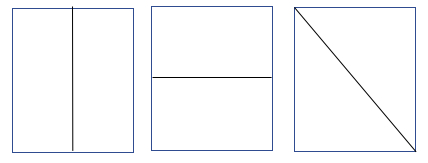
Then moving on to the diagonal line.
I realised that I could move the diagonal line away from the corner. I moved it 3 cm from the top left and 3 cm from the bottom right. I did this again but moving the line 9 cm from the pair of diagonal corners.
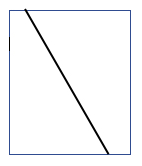
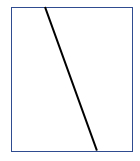
I noticed that the line passed through the middle of the A4 paper.
Then I had a new idea, I thought, what would happen if I made a shape on either side of the vertical half way line? I made a triangle. Lines don't have to be straight. This time I used a semi-circle.
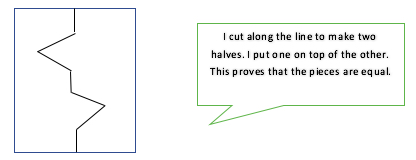
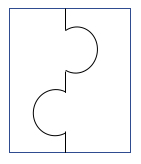
Finally, I tried something a bit different”¦
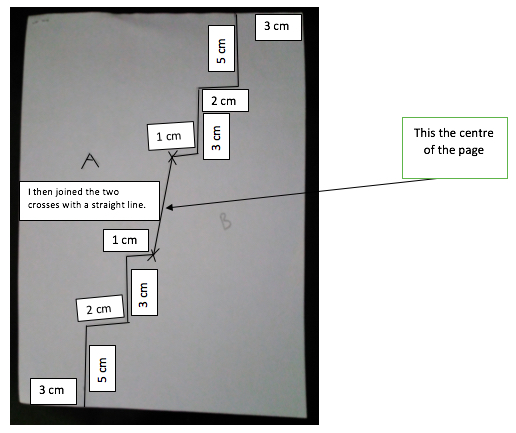
I realised that these are just a few of the many ways to halve a piece of A4 paper.
Georgina from JAPS sent in this picture and some words to go with it.
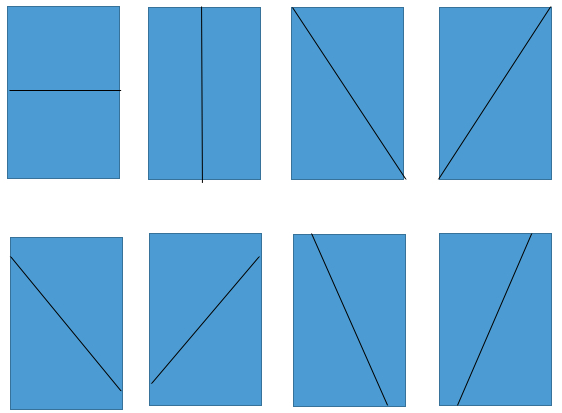
There are probably many other ways to solve them but this is a couple of ways to solve this problem to get you started!
Lilly, Delia and Alecks from Husborne Crawley Lower School wrote
We found 20 ways of halving a piece of paper, but we believe there could be more. We started off by halving it horizontally and portrait. We then moved on to looking at different ways. We thought that if you did the same to each side then it would make half on each side. How many ways can you find?
Sena and Stefan from Great and Little Shelford sent in the following;
First, we found the initial two lines of symmetry, as shown on the example, which would split the paper in half. We drew them on the same piece of paper. Then we found the diagonals, which were not symmetrical when we folded them, but still split the paper in half. We then noticed that between each available gap we could draw a line splitting the gap (which was triangular) in half, going through the centre point. Using this, we worked out that each gap could be halved again and again, which led us to conclude that an A4 piece of paper can be split in half infinite times using a straight line going through the centre point.
Siya and Felicity from North London Collegiate School sent in this Word Document to show their work, you should read it here.docx Also from the same school came Suki and Audrey's solutions which are here.docx
Thank you all for these solutions - they were interesting to read.
Eddie from Amherst School wrote
As NRICH suggested I started off with the basic vertical and horizontal lines to make half.

Then moving on to the diagonal line.
I realised that I could move the diagonal line away from the corner. I moved it 3 cm from the top left and 3 cm from the bottom right. I did this again but moving the line 9 cm from the pair of diagonal corners.


I noticed that the line passed through the middle of the A4 paper.
Then I had a new idea, I thought, what would happen if I made a shape on either side of the vertical half way line? I made a triangle. Lines don't have to be straight. This time I used a semi-circle.


Finally, I tried something a bit different”¦

I realised that these are just a few of the many ways to halve a piece of A4 paper.
Georgina from JAPS sent in this picture and some words to go with it.

There are probably many other ways to solve them but this is a couple of ways to solve this problem to get you started!
Lilly, Delia and Alecks from Husborne Crawley Lower School wrote
We found 20 ways of halving a piece of paper, but we believe there could be more. We started off by halving it horizontally and portrait. We then moved on to looking at different ways. We thought that if you did the same to each side then it would make half on each side. How many ways can you find?
Sena and Stefan from Great and Little Shelford sent in the following;
First, we found the initial two lines of symmetry, as shown on the example, which would split the paper in half. We drew them on the same piece of paper. Then we found the diagonals, which were not symmetrical when we folded them, but still split the paper in half. We then noticed that between each available gap we could draw a line splitting the gap (which was triangular) in half, going through the centre point. Using this, we worked out that each gap could be halved again and again, which led us to conclude that an A4 piece of paper can be split in half infinite times using a straight line going through the centre point.
Siya and Felicity from North London Collegiate School sent in this Word Document to show their work, you should read it here.docx Also from the same school came Suki and Audrey's solutions which are here.docx
Thank you all for these solutions - they were interesting to read.
You may also like
A Bowl of Fruit
Can you work out how many apples there are in this fruit bowl if you know what fraction there are?

